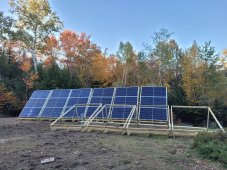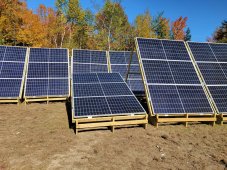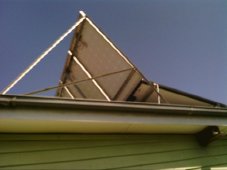PreppenWolf
Solar Addict
- Joined
- Oct 10, 2022
- Messages
- 928
I am in NH and tilting is a requirement. The summer optimal angle is 15deg, the winter angle is 67deg.
I compromised and made custom frames with foldable legs. My frames can be set to 57deg or 25deg which gets me within 3-5% of maximum possible in any given month and I only have to change the angle once in spring (lay them down) and once in fall (extend the legs).
Frames are built from pressure treated (ground contact) 2x4 lumbar with steel corner brackets. The frames and bases (to keep them out of snow) are planted with 16" spiral ground anchors.


I compromised and made custom frames with foldable legs. My frames can be set to 57deg or 25deg which gets me within 3-5% of maximum possible in any given month and I only have to change the angle once in spring (lay them down) and once in fall (extend the legs).
Frames are built from pressure treated (ground contact) 2x4 lumbar with steel corner brackets. The frames and bases (to keep them out of snow) are planted with 16" spiral ground anchors.






